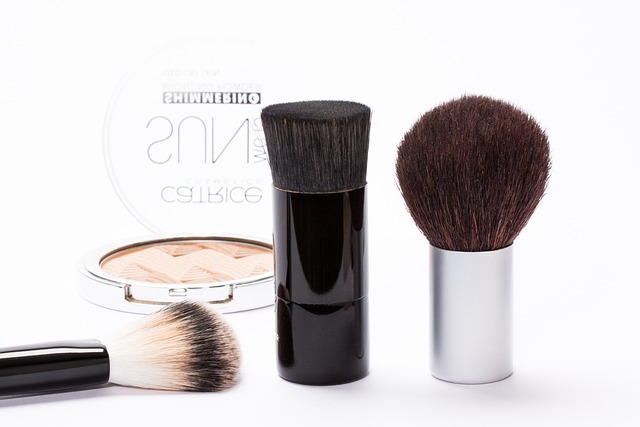Skin tags, common on the neck, armpits, groin and hands, are soft growths caused by friction. While often harmless, they may be removed for aesthetic reasons. In Glasgow, non-invasive methods like salicylic acid or duct tape are popular but evidence is limited. Surgical options include cryosurgery, laser surgery, microlase and radiofrequency ablation, offering minimal scarring and faster recovery. Laser therapy, a modern method, provides precise, efficient removal with reduced side effects. Proper post-removal care prevents scarring and complications.
Looking to get rid of those unsightly skin tags without leaving scars? This comprehensive guide explores effective methods for Glasgow tag removal, covering everything from understanding the causes and characteristics of these common growths to advanced treatments like laser therapy. We delve into non-invasive options, safe surgical procedures, and crucial post-removal care tips to ensure optimal results with minimal risks.
- Understanding Skin Tags: Causes and Characteristics
- Non-Invasive Removal Methods: Topical Treatments and Home Remedies
- Safe Surgical Options for Tag Elimination
- Laser Therapy: A Modern Approach to Glasgow Tag Removal
- Post-Removal Care: Minimizing Scarring and Complications
Understanding Skin Tags: Causes and Characteristics
Skin tags, also known as acrochordons, are small, soft skin growths that typically appear as hanging or dangling pieces on various parts of the body. They are usually harmless and often go unnoticed, but some individuals may find them aesthetically displeasing or uncomfortable. Understanding their causes and characteristics is an essential first step in deciding how to remove them without leaving scars.
In many cases, skin tags develop due to friction or irritation against clothing or other surfaces. Common areas for Glasgow tag removal include the neck, armpits, groin, and hands. They are more prevalent in certain populations, especially those with obesity, diabetes, or hormonal imbalances. Skin tags are generally soft, flesh-colored, or slightly darker, and can vary in size from a few millimeters to several centimeters. While they usually don’t cause pain, itching or discomfort may occur.
Non-Invasive Removal Methods: Topical Treatments and Home Remedies
Non-invasive removal methods, including topical treatments and home remedies, are popular choices for those seeking to eliminate skin tags in the comfort of their own homes. These approaches offer a gentler alternative to surgical procedures, aiming to minimize or prevent scarring while still achieving effective results.
One such method involves using over-the-counter topical creams or ointments that contain ingredients like salicylic acid, lactic acid, or duct tape. These substances can help soften and eventually remove skin tags by exfoliating the skin or creating a suffocating effect. Alternatively, some people swear by home remedies like applying apple cider vinegar or banana peels directly to the tag, though scientific evidence supporting these methods is limited. For those considering Glasgow Tag Removal without surgery, consulting with a dermatologist is advisable to ensure safety and discuss suitable options tailored to individual needs.
Safe Surgical Options for Tag Elimination
When considering safe surgical options for Glasgow Tag Removal, it’s crucial to opt for procedures that minimise scar formation. Techniques like cryosurgery, where extreme cold is used to freeze and remove skin tags, often leave minimal scarring but may require multiple treatments. Laser surgery is another popular choice; it targets the blood vessels supplying the tag, causing its removal with less tissue damage compared to traditional cutting methods.
For precise and scar-less Glasgow Tag Removal, many professionals recommend microlase or radiofrequency ablation. These advanced techniques offer quicker recovery times and produce finer results, reducing the likelihood of noticeable scarring. Always consult a qualified dermatologist or healthcare provider for personalized advice on the best surgical option based on tag size, location, and your individual healing capabilities.
Laser Therapy: A Modern Approach to Glasgow Tag Removal
Laser therapy has emerged as a modern and effective approach to Glasgow tag removal, offering a precise and minimally invasive method for treating skin tags. This advanced technique utilizes concentrated beams of light to target and destroy specific cells in the skin tag, promoting its gradual disappearance over time. The key advantage lies in its ability to minimize scarring, making it an attractive option for those seeking a permanent solution without leaving unsightly marks.
Compared to traditional methods like freezing or surgical excision, laser therapy is often preferred due to its efficiency and precision. It allows dermatologists to target only the affected area, reducing the overall impact on healthy skin surrounding the Glasgow tags. As a result, patients can expect faster recovery times and fewer side effects, ensuring they maintain a clear and smooth complexion without the risk of scarring.
Post-Removal Care: Minimizing Scarring and Complications
After successfully removing skin tags using any method, proper post-removal care is crucial for minimizing scarring and potential complications in Glasgow Tag Removal procedures. It’s essential to keep the treated area clean and dry to prevent infection and irritation. A gentle cleanser and lukewarm water are recommended for cleaning; avoid scrubbing or applying harsh products that could cause further damage.
Moisturizing the skin gently after cleansing can aid in healing, but choose oil-free moisturizers to prevent blocking pores. It’s advisable to avoid direct sunlight on the treated areas until complete healing is observed, as UV radiation can increase scarring risk. Additionally, be mindful of not picking or touching the skin tags post-removal, as this could lead to infection or leave permanent scars.
When it comes to removing skin tags without scarring, understanding your options is key. From non-invasive methods like topical treatments and home remedies, to safer surgical procedures and modern laser therapy, each approach has its merits. By carefully considering your preferences and medical history, you can choose the best method for Glasgow tag removal, ensuring minimal scarring and optimal results. Remember, prompt post-removal care is also vital to prevent complications and promote healthy healing.
